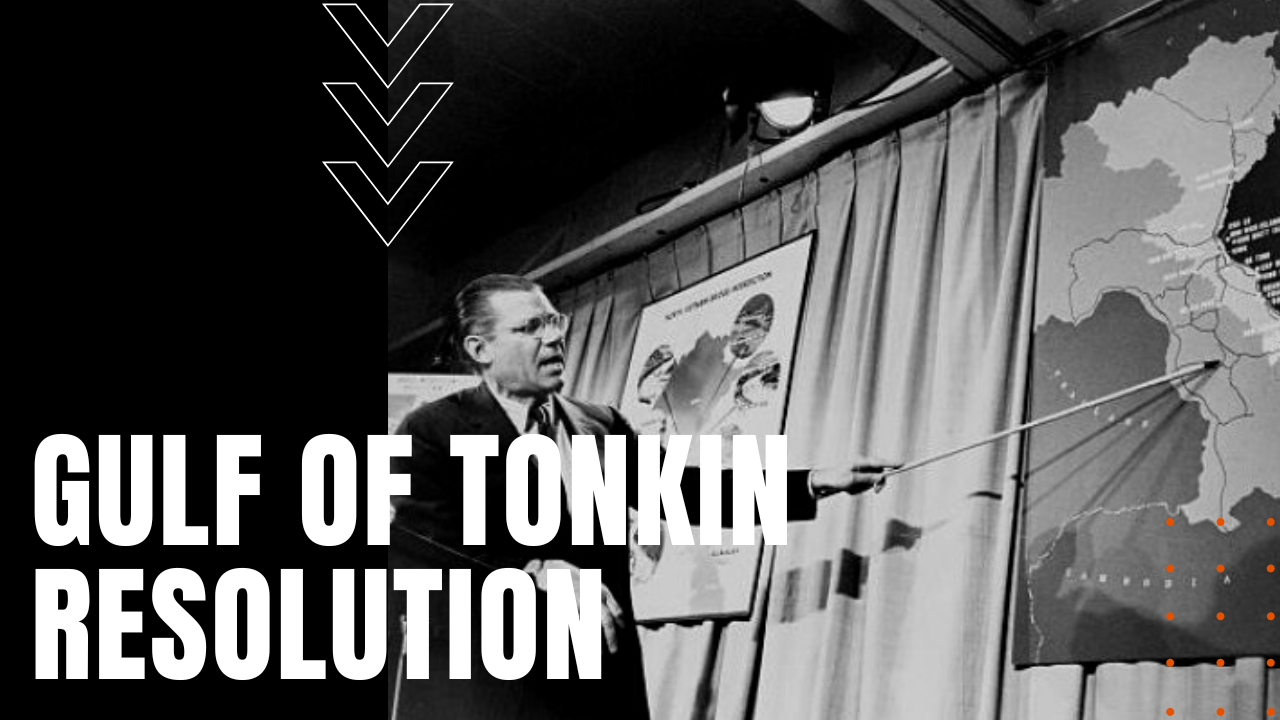Gulf of Tonkin Resolution

Disrupting Communism
After a decades-long civil war between communist North Vietnam and the U.S.-backed puppet government of the south, led by dictator Ngo Dinh Diem, by 1964, during the height of America’s Cold War against Russian-backed communist expansion, the United States engaged in bombing campaigns along the Ho Chi Minh Trail, intended to disrupt North Vietnamese troop and supply movements into the south.
The Gulf of Tonkin Incident
Spearheaded by Lieutenant General William Westmoreland, leader of the U.S. Military Assistance Command, bombardments of Laos and Vietnam were conducted by U.S. warships stationed in the Gulf of Tonkin.
U.S. Ships were purported to be fired upon by North Vietnamese fast-attack torpedo boats on August 2nd and August 4th respectively—first on the U.S.S. Maddox, followed by a second purported and now debunked attack on the U.S.S. Turner Joy.
Gulf of Tonkin Resolution
In response, on August the 7th, the U.S. House of Representatives unanimously passed the Gulf of Tonkin Resolution, which gave President Lyndon Baines Johnson full authority, without a formal declaration of war by Congress, for the use of conventional military force in Southeast Asia to assist “any member or protocol state of the Southeast Asian Collective Defense Treaty.”
The resolution was further ratified by the U.S. Senate, including two opposing votes by Oregon Senator Wayne Morse and Arkansas Senator Ernest Gruening, the later objecting to, in his words, “sending our American boys into combat in a war in which we have no business.”
Even before the Gulf of Tonkin Resolution was signed into law, President Johnson took to the airwaves on August 5th, informing the American public about the alleged attacks on American naval assets in the Gulf of Tonkin, announcing his intention to retaliate for the unprovoked attacks, effectively kicking off the decades-long Vietnam War, which would lead to the deaths of 58,220 Americans, 200,000 South Vietnamese soldiers as well as 1.2 million civilian casualties.
Escalation After Gulf of Tonkin
The Vietnam War escalated substantially on February 13th, 1965, when the U.S. military launched Operation Rolling Thunder, which was a large-scale bombing campaign of North Vietnamese targets that would persist for the next two years.
Ten years later, the war would come to a close during the North Vietnamese Spring Offensive of 1975, leading to the Fall of Saigon and America’s unceremonious exit from Southeast Asia, making the Gulf of Tonkin Resolution, an incendiary event in modern American history.
